Eclipse Prayer (Ṣalāt al-Kusūf and Khusūf) Explained
The term kusūf refers to the phenomenon when the moon passes between the sun and the earth, aligning in a straight line and casting its shadow on the earth, partially or fully blocking the sun’s light. Conversely, khusūf refers to the lunar eclipse when the Earth’s shadow falls on the Moon. In both cases, Islam has prescribed a special prayer known as Ṣalāt al-Kusūf (for the solar eclipse) and Ṣalāt al-Khusūf (for the lunar eclipse).
These celestial events are among the great signs of Allah, reminding humanity of His power and majesty. They are not linked to any superstitions, but rather serve as moments for turning back to Allah through prayer, supplication, and remembrance. In the days of Jāhiliyyah, people believed that eclipses occurred to mark the birth or death of a great person. When the sun was eclipsed on the day Ibrāhīm, the young son of the Messenger of Allah ﷺ, passed away, many said it was a sign connected to his death. The Prophet ﷺ corrected this false belief and explained the divine wisdom behind such events.
Imām al-Bukhārī and Muslim narrate from Ibn Masʿūd al-Anṣārī that the Prophet ﷺ said:
“The sun and the moon are two signs from Allah, and they do not become eclipsed for the death or the birth of anyone. If you see that, hasten to remember Allah and to pray.”
In another narration in al-Ṣaḥīḥayn, the Prophet ﷺ said:
“Call on Allah and pray until [the eclipse] is over.”
And Abū Mūsā (raḍiyallāhu ʿanhu) reported:
“These signs that Allah sends are not for the death or life of anyone, but Allah makes His slaves afraid through them. So if you see anything of that, then hasten to remember Allah, call on Him, and seek His forgiveness.” (al-Bukhārī)
Thus, eclipses are reminders of Allah’s power, not omens tied to human life or death. They are moments for awe, humility, prayer, and returning to Allah in repentance and remembrance.
The Ruling of Ṣalāt al-Kusūf
The eclipse prayer is a Sunnah mu’akkadah (emphasised Sunnah). It is recommended to perform it in congregation, as the Prophet ﷺ did, though it is also valid individually. The Sunnah is to perform it in the mosque.
ʿĀʾishah (may Allah be pleased with her) reported:
“The sun was eclipsed during the lifetime of the Messenger of Allah ﷺ. He went out to the mosque, and the people lined up behind him. He said the takbīr, recited a long recitation, then pronounced the takbīr and made a long bowing. He then said, ‘Samiʿa-Llāhu liman ḥamidah, Rabbanā wa laka’l-ḥamd,’ and stood without prostrating. He recited another long recitation, shorter than the first, then pronounced the takbīr and made another long bowing, shorter than the first. He then said, ‘Samiʿa-Llāhu liman ḥamidah, Rabbanā wa laka’l-ḥamd,’ then prostrated. He did the same in the second rakʿah, completing four bowings and four prostrations. The sun became clear before he finished, then he stood and praised Allah as He deserves. Then he said: ‘The sun and moon are two of the signs of Allah; they do not eclipse because of the death or life of anyone. If you see them, then rush to prayer.’”
Narrated by al-Bukhārī and Muslim.
This hadith sets the foundation: Ṣalāt al-Kusūf is a distinct prayer with lengthened standing, recitation, and bowing, meant to awaken awe of Allah.
How Ṣalāt al-Kusūf is Performed
Ṣalāt al-Kusūf is unlike the regular voluntary prayers that Muslims are familiar with. It is composed of two rakʿahs, but each rakʿah carries a unique rhythm: two long standings, two recitations, two bowings, and two prostrations.
When the Prophet ﷺ led the people, he began the prayer with al-Fātiḥah followed by a long sūrah, reciting aloud so all could hear. His standing stretched so long that Ibn ʿAbbās later remarked it was almost equal to Sūrat al-Baqarah. He then bowed for a lengthy rukūʿ, rose to praise Allah, and instead of proceeding to sujūd as in a normal prayer, he began recitation again. This second recitation was shorter than the first, yet still longer than what they were accustomed to in daily prayers. After another rukūʿ, also slightly shorter than the first, he finally completed the rakʿah with two extended prostrations.
The second rakʿah mirrored the first, though each part was somewhat shorter than what preceded it. Abū Mūsā al-Ashʿarī, who prayed behind the Prophet ﷺ, later described it as the longest qiyām, rukūʿ, and sujūd he had ever experienced in any prayer.
This was no ordinary ritual. The Prophet ﷺ wanted the community to feel the weight of the moment—these cosmic events were signs of Allah’s majesty, not superstitions tied to births or deaths. Thus, along with prayer, he urged believers to fill the time with remembrance, seeking forgiveness, glorifying Allah, giving in charity, and pouring out their hearts in supplication. His words were clear: “When you see them, supplicate to Allah, say takbīr, pray, and give charity.” (Agreed upon).
Scholars mention that praying two rakʿahs like any other nafl prayer would technically suffice, but the form established by the Prophet ﷺ—two rukūʿs in each rakʿah with prolonged recitation and devotion—is the most complete, and the one that captures the awe and humility intended by this Sunnah.
Three Levels of Performing Ṣalāt al-Kusūf
The Sunnah of the eclipse prayer allows for variation in practice. Scholars and jurists have described three broad ways in which it may be performed — from the simplest acceptable form to the most complete manner reported from the Prophet ﷺ. Each reflects different degrees of devotion and length, but all are valid when done with sincerity.
1. The Short (Minimal) Form
In its simplest form, one prays two rakʿahs just like any Sunnah prayer, making the intention: “I intend to perform the Sunnah prayer of the eclipse for the sake of Allah.” Each rakʿah consists of al-Fātiḥah, a sūrah, one bowing (rukū), and two prostrations (sujūd), without repeating the recitation or prolonging the standing.
- Make the intention: “I intend to perform the Sunnah prayer of the eclipse for the sake of Allah.”
- Pray two rakʿahs exactly as you would any Sunnah prayer.
- Recite al-Fātiḥah and a sūrah in each rakʿah, then bow once and complete with two sujūd.
This fulfils the requirement, though it does not capture the fuller Sunnah.
2. The Moderate Form
The second way mirrors the structure that the Prophet ﷺ himself demonstrated, though with moderate length. The worshipper begins with intention, then in the first rakʿah recites al-Fātiḥah and a sūrah, bows (rukū), rises again, and instead of proceeding to sujūd, recites al-Fātiḥah and another sūrah a second time. This is followed by a second bowing, then sujūd as normal. The second rakʿah is performed in the same manner.
- Make the intention for Ṣalāt al-Kusūf.
- In the first rakʿah, recite al-Fātiḥah and a sūrah, then bow (rukūʿ).
- Rise from bowing, and instead of proceeding to sujūd, recite al-Fātiḥah and another sūrah again.
- Bow a second time, then rise and complete the rakʿah with two sujūd.
- In the second rakʿah, repeat the same pattern.
Thus, in every rakʿah there are two qiyam with recitations and two bowings (rukū), making a total of four bowings and four prostrations (sujūd) in the prayer.
3. The Complete (Most Perfect) Form
The most complete manner is the way the Prophet ﷺ extended the prayer to reflect awe before Allah’s signs. It follows the same structure as the moderate form — two recitations and two bowings in each rakʿah — but here the recitations and tasbīḥāt are prolonged.
- In the first standing of the first rakʿah, recite Sūrat al-Baqarah.
- In the second standing, recite for the time of about two hundred (200) verses.
- In the first standing of the second rakʿah, recite for about one hundred and fifty (150) verses.
- In the second standing, recite for about one hundred (100) verses.
In the bowings (rukūʿ) and prostrations (sujūd):
- In the first rukūʿ and sujūd, say tasbīḥ for the length of one hundred (100) verses.
- In the second, say tasbīḥ for about eighty (80) verses.
- In the third, say tasbīḥ for about seventy (70) verses.
- In the fourth, say tasbīḥ for about fifty (50) verses.
It is stated in (Umdat As-Salik, p.87): “ Its perfect form is: To recite after the Istiftah supplication, seeking refuge in Allah, and Al-Fatihah: Al-Baqarah in the first standing (Qiyam), Al-Emran in the second, An-Nissa` in the third, Al-Mai`da in the fourth or chapters of similar length, offer Tasbeeh (Glorification of Allah) in the first bow (Ruku) for a period parallel to the reciting of a hundred verses from chapter Al-Baqarah, parallel to eighty in the second, seventy in the third, fifty in the fourth, and continue the rest of this prayer as is the case with other prayers, then the Imam delivers two speeches (sermons) similar to Friday prayer.”
This creates an atmosphere of deep solemnity and remembrance, impressing upon the hearts of the companions the majesty of Allah’s signs in the heavens.
When performed in congregation, it is also Sunnah for the imām to address the people afterwards with two short sermons, reminding them to supplicate, give charity, seek forgiveness, and turn back to Allah until the eclipse passes.
Disclaimer
The views expressed in this article are the author’s own and do not necessarily mirror Islamonweb’s editorial stance.

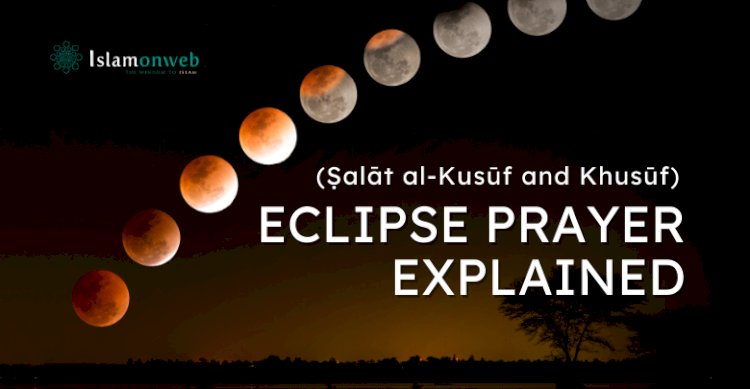


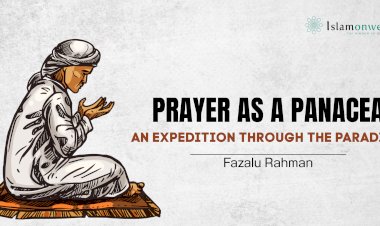
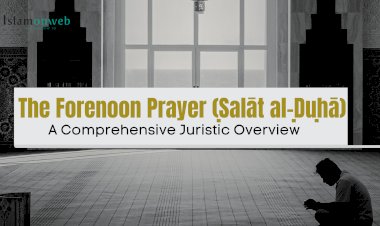

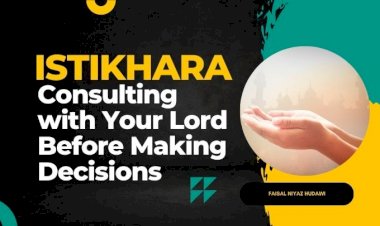












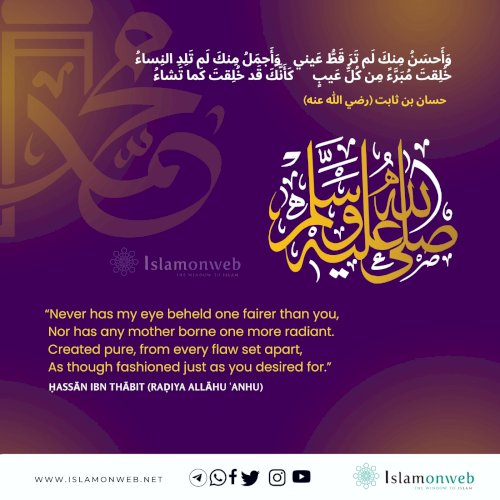

Leave A Comment